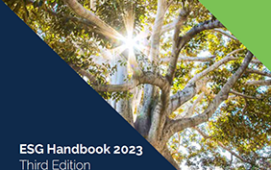
Alternative data will be key to driving alpha in the financial services sector, with data ranging from auto insurance policies to patents. These types of alternative data and others were discussed during Quandl’s third annual conference that brought together speakers including Adena Friedman, CEO of Nasdaq; Philip Brittan, CEO and founder of Crux Informatics; Matt Kummell, head of North America, business advisory services at Citi; Abraham Thomas, chief data officer at Quandl; and John Collins, chief product officer at Thasos Group.
Tammer Kamel, Quandl CEO, kicked off the event, noting that investors are hungry for both US and non-US transaction data, before handing over to Friedman. She discussed Nasdaq’s reasoning for acquiring Quandl and investing in the future of alternative data, explaining that there is value for investors in being able to take extra data and to extract insights from it.
She said: “For example, Quandl is able to use data about new auto insurance policies to infer new car deliveries in the US. The auto-insurance data, for instance, comes from insurance companies, but it can help investors learn about auto manufacturers and their levels of success selling and then delivering cars to drivers in the US. In another example, if you could follow airline traffic patterns you might be able to learn more about business travel trends that impact hotels and conventions, creating new information about industries and the speculation around investments, partnerships, and expansions.”
Michael Recce, chief data scientist at Neuberger Berman, discussed the need for a data scientist to interpret alternative data in a way that is usable for investors, as well as the emerging use of GPU and cloud technologies to create more computing power. Todd Mostak, CEO of OmniSci, demonstrated the visualisation capabilities of GPU-accelerated analytics to show how escalating tariffs in the current US-China trade dispute have affected trade.
Crux Informatics’ Brittan outlined how to create more efficiency and scalability in ingesting, engineering, and managing alternative data in his presentation on the data supply chain. To find value from datasets at faster rates, Brittan proposed: “Data engineering is expensive, time consuming, and frustrating. There are documentation issues, it’s hard to hire data engineers, the flow of data introduces operational complexities, and data is often missing. The ability to short-circuit the laborious and slow hunter-gatherer phase, and move into the data supply chain, is becoming critical.”
A ‘sharks’ session at the event reviewed alternative data offers from Patsnap and Suburbia, and Quandl answered a series of questions from “sharks.”
Patsnap presented the predictive power of patents to validate investment decisions and measures how novel each innovation is, how often a company’s work is cited, and how many times a company needs to cite others’ work within the patent.
Suburbia displayed its ability to compare datasets stored within its system using machine learning. Adhering to a productised approach, Suburbia aggregates data on the product level, meaning there is no personal information attached to the data, and the focus of the data is on item pricing, discounts, and payment types.
Subscribe to our newsletter




